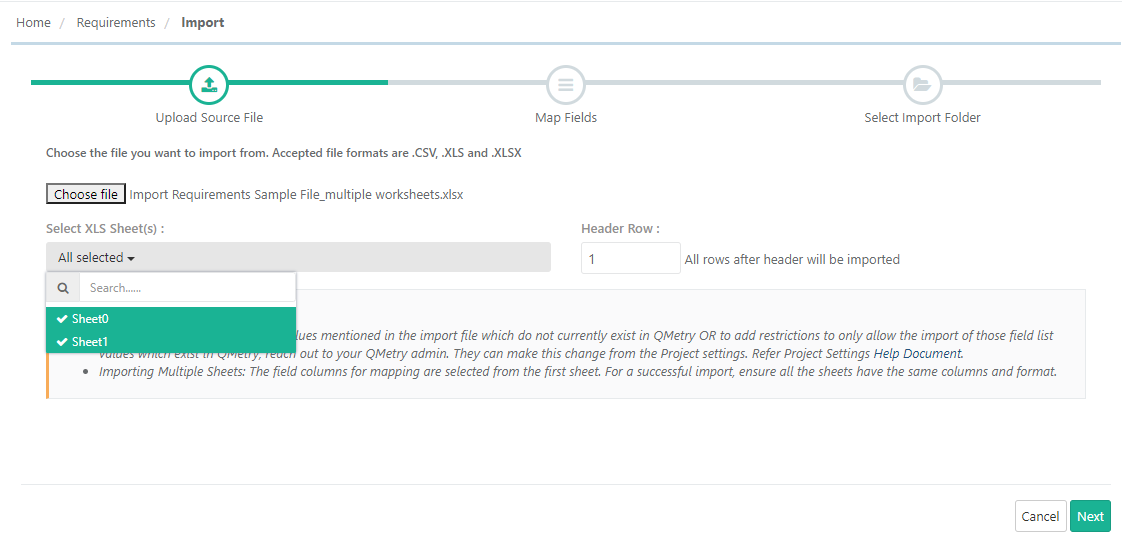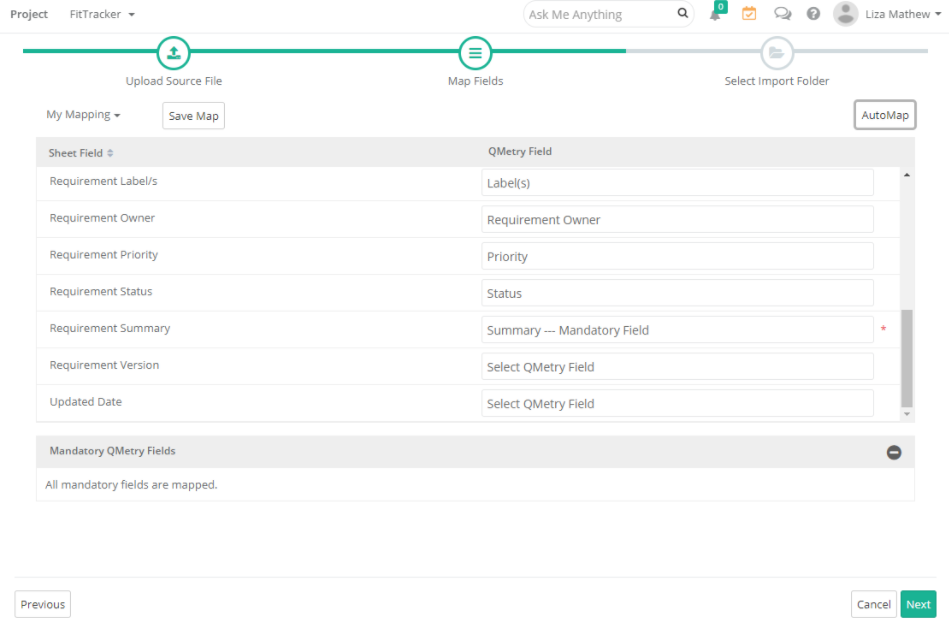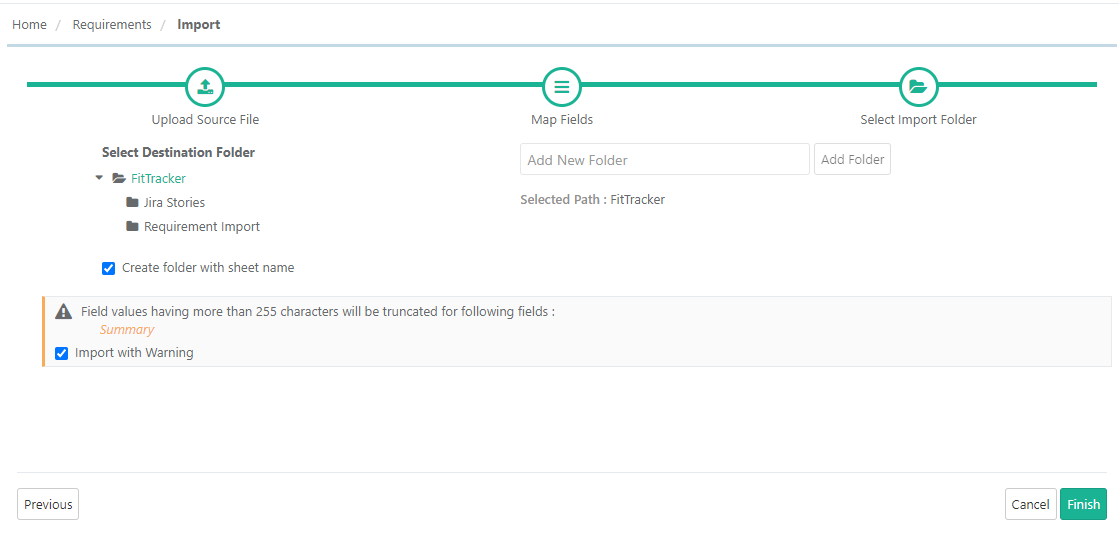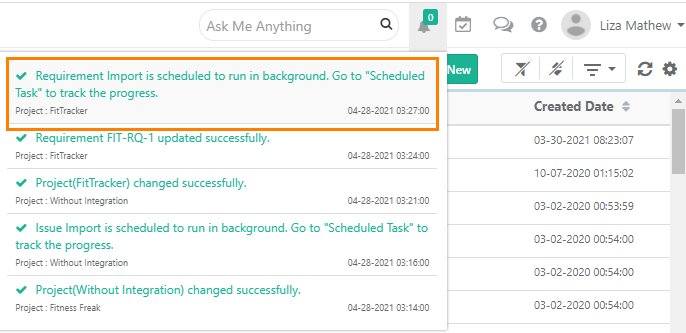1. Go to the Requirements module.
2. Click on the cog icon  on the toolbar and select Import.
on the toolbar and select Import.

It opens QMetry Import wizard showing the following three stages of import:
- Upload Source File
- Map Fields
- Select Import Folder
Step 1: Upload Source File
Browse the file and upload it to import. Select at least one sheet of the Excel file.
Note: If you receive an “Invalid file” message while uploading some Excel file formats, then open the file in Microsoft Excel and save the file as type “Excel Workbook” with a different name. After that try to import the newly created file.
The file name appears adjacent to the Choose File button.
- Select XLS Sheet: All the sheets that exist within the file are displayed on the drop-down. You can select multiple sheets that exist in the Excel file. Select at least one sheet that contains the requirements you want to import.
→ Importing Multiple Sheets: While importing multiple sheets, the field columns for field mapping are selected from the first sheet. For a successful import, ensure all the sheets have the same columns and format.
- Header Row: Mention the row number that is considered as a header row so that all rows after that header row can be imported. The mentioned Header Row will be applicable to all the selected sheets.
Click Next.

Step 2: Mapping the Fields
The fields in the Excel file are displayed under Sheet Field and fields in QMetry are displayed under QMetry Field.
Map the fields from Excel and QMetry one by one. Fields mandatory to map are displayed in red color.

Removing mapping between fields
If you think that the mapping was not carried out properly, then you can remove mapping of fields one by one.
To remove a single field mapping, open the QMetry Field list and select "Select QMetry Field" option on it.
Step 3: Save Mapping
Before moving on, save your map so that if you ever need to re-import more requirements using the same file format you can avoid replication of the same mapping process. You can save the field mapping using the Save Map button and giving the map a name. The saved mapping is available to use the next time when you go for mapping the fields. Just select the mapping name and automatically mapping will be done based on the mapping criteria set in the selected mapping. It will apply the same mapping as you did.
Additional Mapping Options
- Auto Map: This option maps the system and custom fields automatically by using keywords in the header names.
- My Mappings: The drop down lists out all the mappings saved by logged in user while importing requirements. If there is a Map Name on the drop-down, then it shows the mapping currently applied.
Click Next to proceed towards the next step for import.
Step 4: Selecting Import Folder
Select a destination folder that you want to import the requirements into. The “Selected Path” shows the destination folder path as soon as you select the folder on the tree.
If you want to create a new folder under the tree, then first select the location on the tree, enter the Folder Name in the text box and then click on the Add Folder button.
Click Finish to complete the Import wizard and start the import process.
- Create folder with sheet name: Select this option if you want to create folders with Excel sheet names to import requirements. It will create a new folder for each sheet within the file and import test cases into the respective folders. It eases the identification of excel sheets to which the requirements belong.
- Import with Warning: The option allows users to import requirements with a Summary that exceeds 255 characters by truncating the Summary to 255 characters. Select the check box to import requirements even with larger Summary. If the check box is not selected, the entire import will fail if there are requirements with Summary exceeding 255 characters.

After completing the import wizard process the import will be scheduled. An Import Scheduled message will pop up and you can view the progress in the notification window on the application header.
This allows scheduled imports to run in the background and allows the user to continue with their other work.

Refer to Notification Window for Import Progress for more details.




